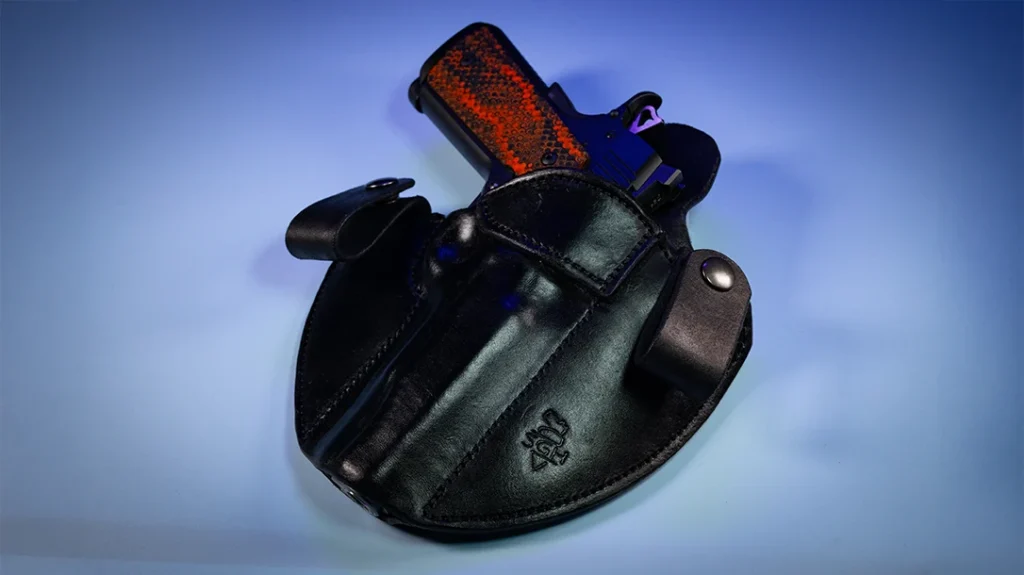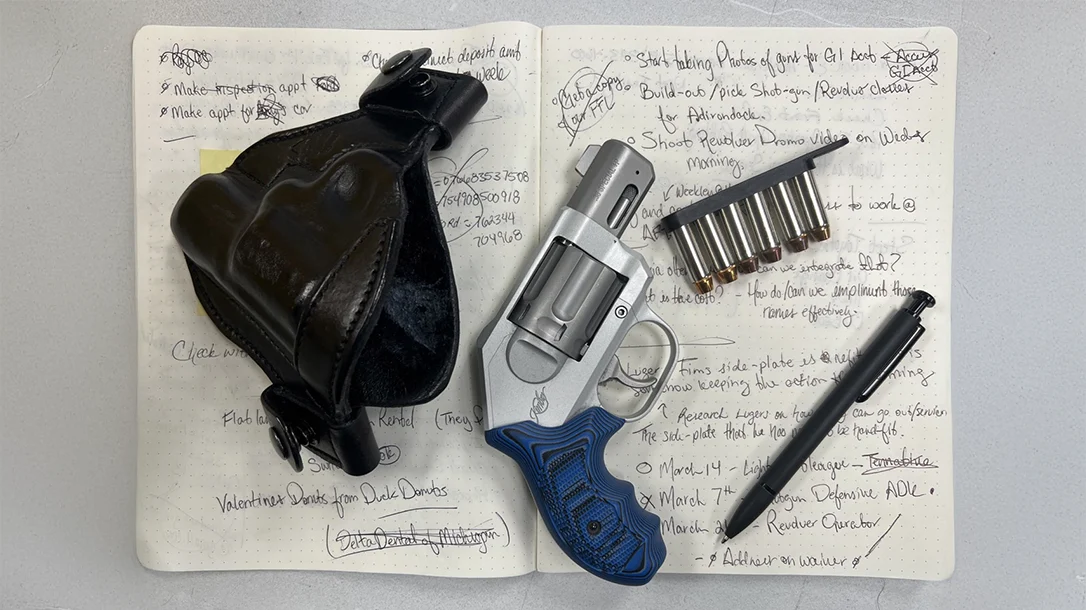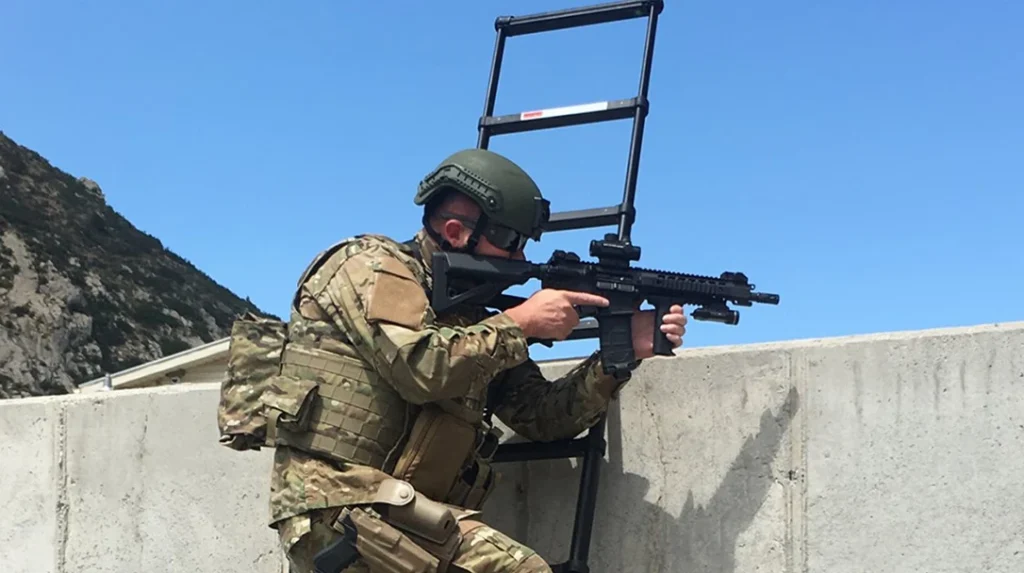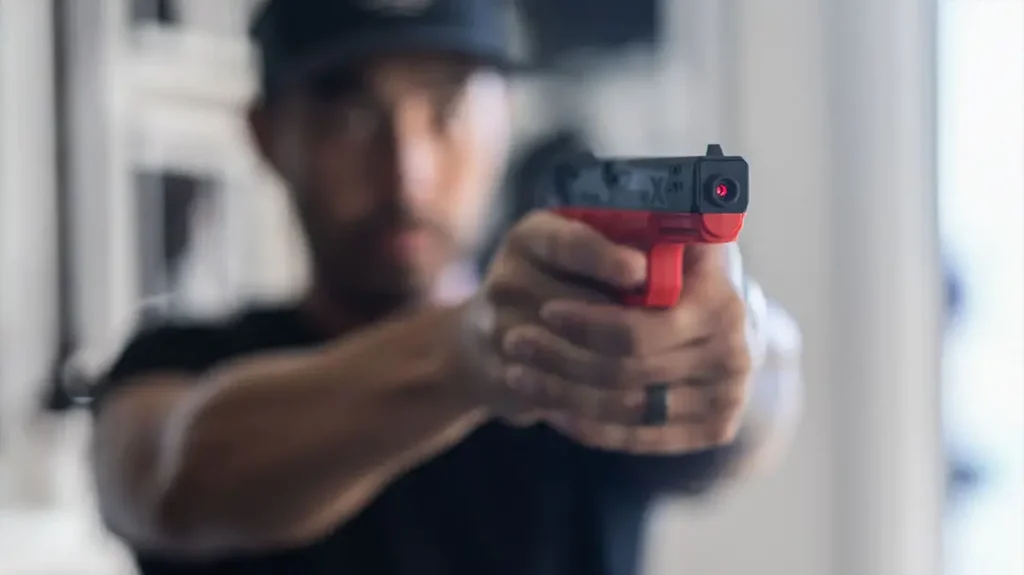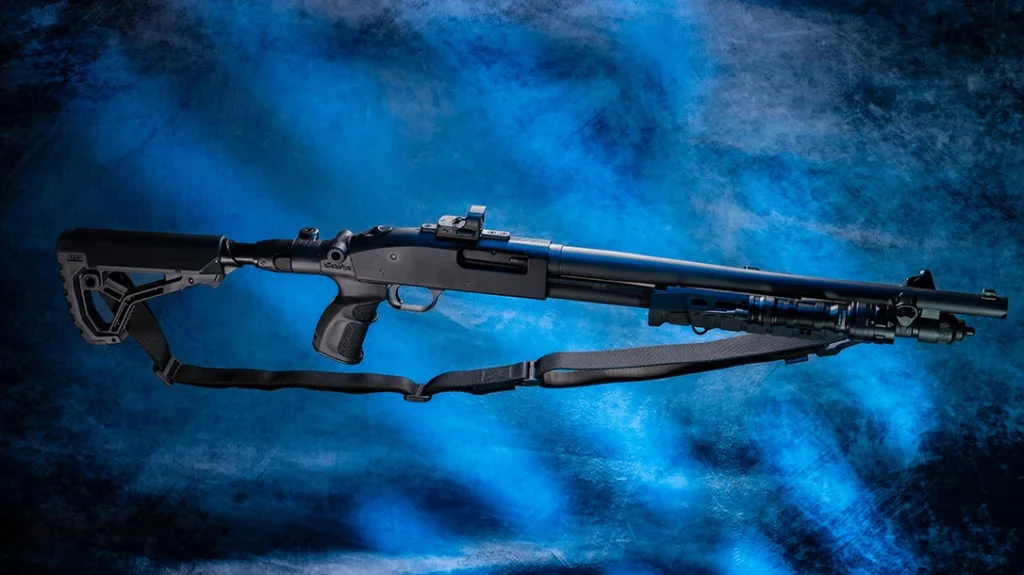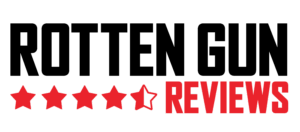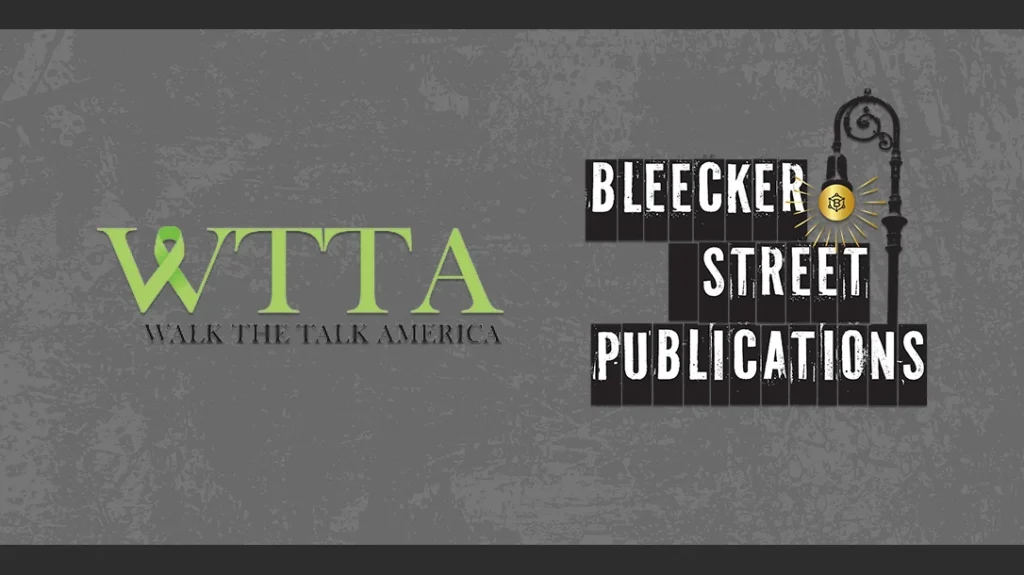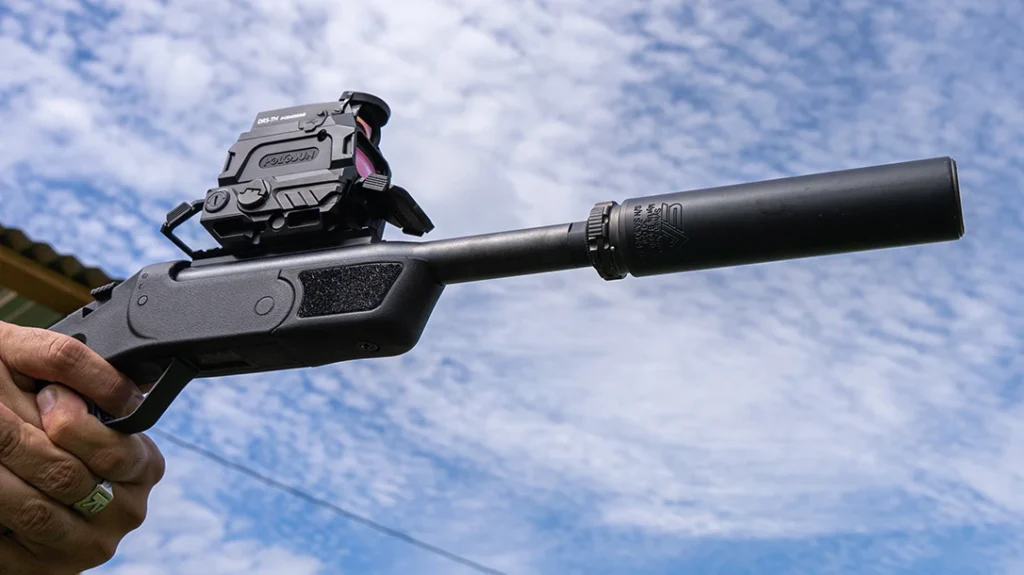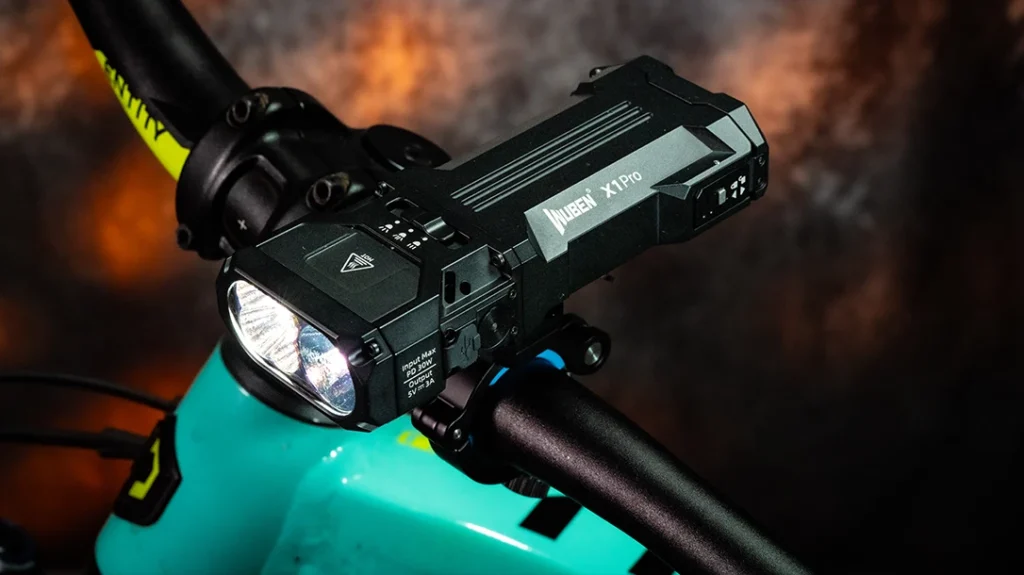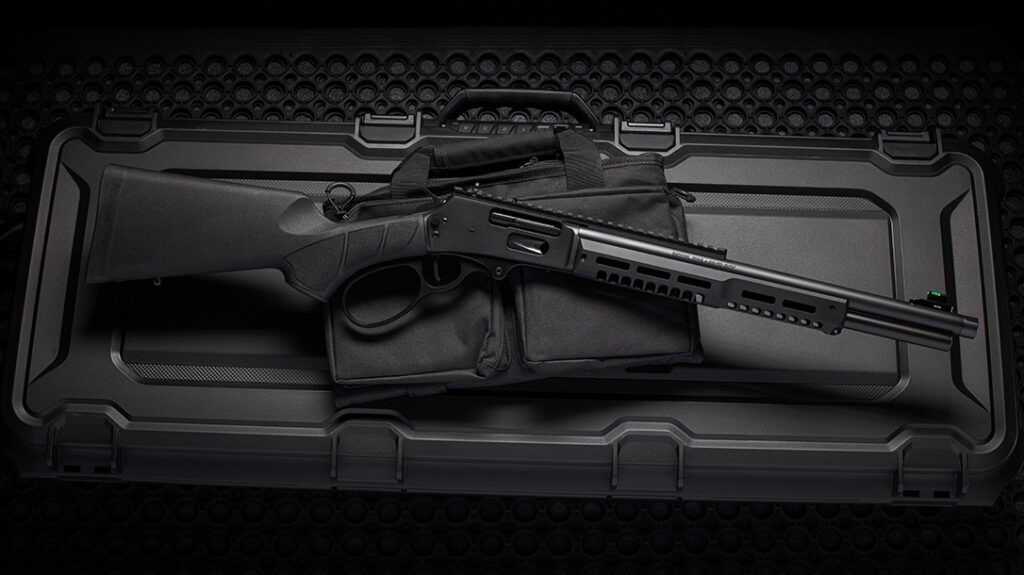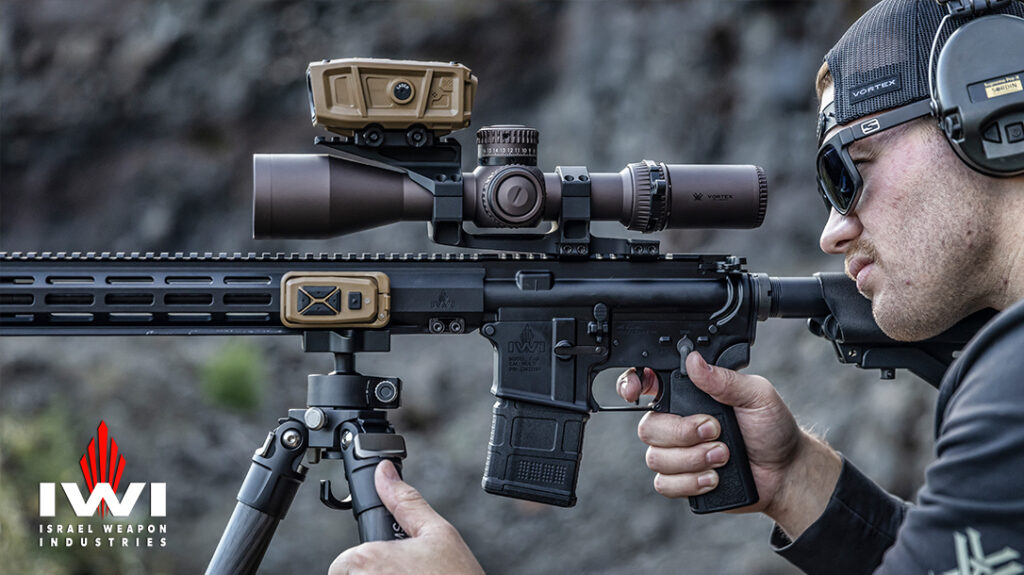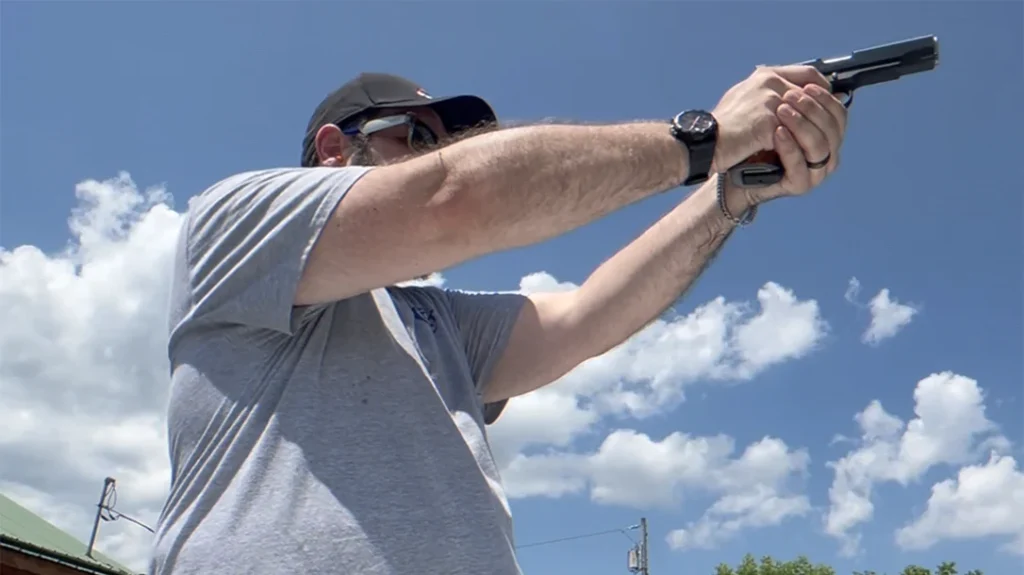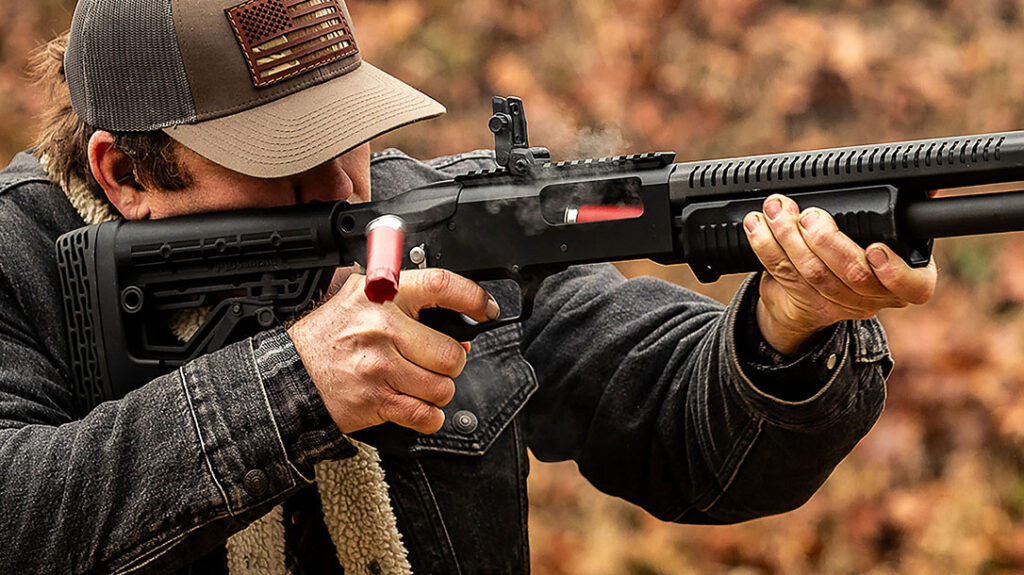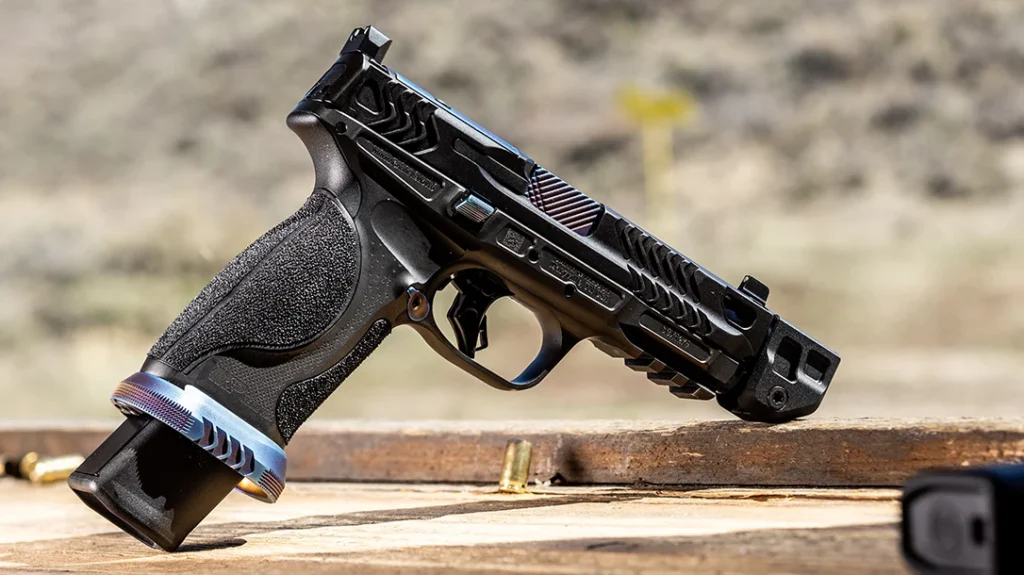There’s a certain confidence that comes from knowing your gun, your gear, and your draw. But that confidence doesn’t come standard. It’s earned. And when it comes to concealed carry, no piece of gear is more misunderstood—or more critical—than the holster. For this reason, it is important that you include a holster as a part of your training regimen.
The Importance of Training with a Holster
Most people buy a handgun and a holster on the same day, usually from a big-box store. That’s the good news. The bad news? That’s often where their journey ends. The holster is uncomfortable. The gun digs in. They stop carrying. Or worse—they carry irregularly, inconsistently, and without real training. That’s not just ineffective. It’s dangerous.
If you own a gun, you need to know how to run it. If you carry a gun, you need to train with it. And that training starts with one simple truth: your holster matters.
Advertisement — Continue Reading Below
Fit, Comfort, and Why It All Starts There
A holster must do two things exceptionally well. It has to secure your firearm, and it has to be comfortable enough for you to wear every day. If it fails at either, you won’t carry. And if you’re not carrying, you’re not prepared.
Worse still, a bad holster can set you up for a negligent discharge. The majority of shooting injuries happen while operating from a holster—drawing, reholstering, or fumbling with gear. If your holster isn’t shaped for your specific gun, if it doesn’t retain that gun under stress, or if it collapses under tension when you try to reinsert the firearm, you’re playing with fire.
Let’s be clear: besides the firearm itself, your holster is the most important piece of gear you own.
Advertisement — Continue Reading Below
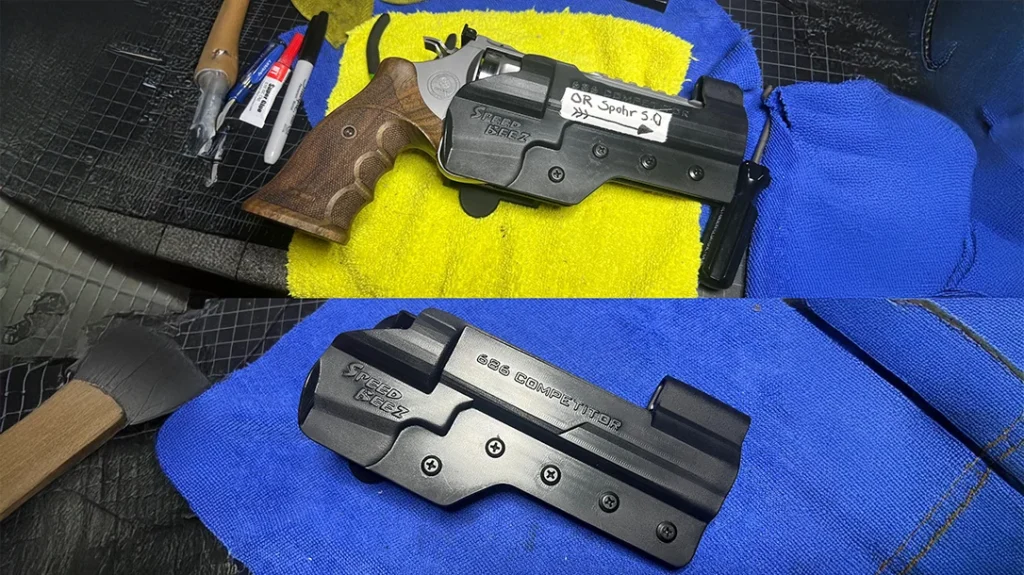
Holster Types and Universality
Holsters generally come in two flavors: IWB (inside the waistband) and OWB (outside the waistband). I don’t care which one you run—as long as you remember one thing: concealed means concealed.
If your firearm is printing—visible through your clothing—it’s no longer concealed. And if it’s obvious you’re carrying, you may as well be open carrying, which comes with its own set of risks and legal implications depending on your state. Concealed means discreet, and your holster choice should reflect that.
Advertisement — Continue Reading Below
Leather holsters often require a break-in period. If you’re trying new gear, plan for a week of adjustment. Better yet, buy a few options from reputable manufacturers and return what doesn’t work. Most good holster companies understand how personal and variable comfort is and have solid return policies. You may even surprise yourself—sometimes the holster you thought you’d hate becomes your daily go-to.
And while it might seem excessive, you should have at least two or three holsters that work for your carry gun. Wardrobe changes, seasonal clothing, or travel can all affect your method of carry. Be prepared.
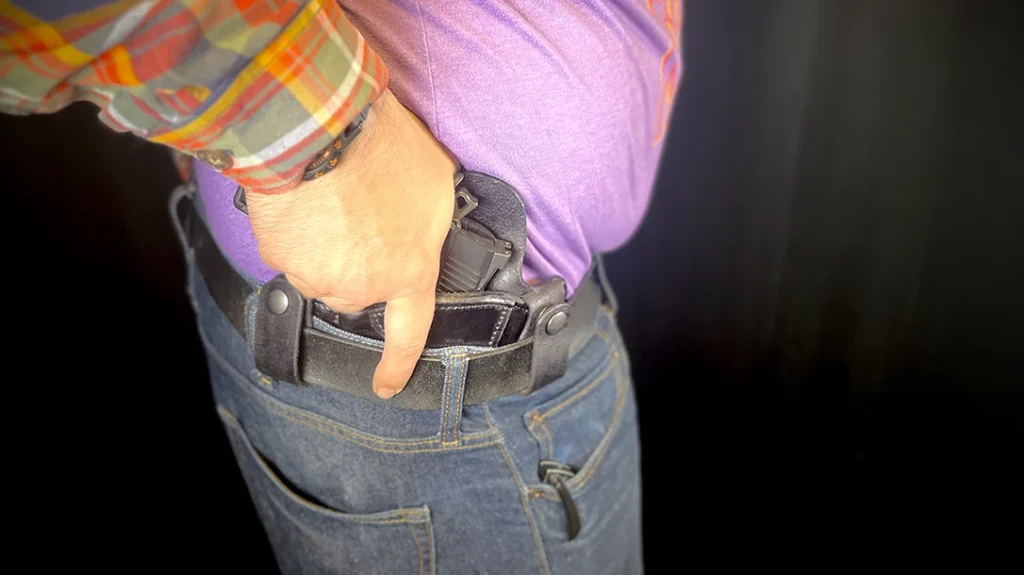
Advertisement — Continue Reading Below
Basics of Proper Fitment
Let’s talk fundamentals. Retention is non-negotiable. If you can’t turn your holster upside down without the gun falling out, it doesn’t belong on your belt. This isn’t just about range days—it’s about emergencies, physical altercations, and the unexpected chaos of real-world violence. Your gear has to stay with you.
Reholstering is another critical checkpoint. It’s not just a formality—it’s a test of your holster’s design and your technique. If you can’t reholster cleanly, you can’t train effectively.
Yes, reholstering during a gunfight isn’t a priority, but once the shooting stops, your holster is the safest place for your gun. If reholstering becomes a struggle, if you’re fishing for the mouth of a soft-sided holster, or if your clothing interferes, you’re asking for trouble.
Advertisement — Continue Reading Below
Avoid “universal fit” holsters. They don’t hold up to serious use. Buy gear that’s designed for your make and model. If you’re running a common revolver or 1911, this should be easy. If you’re carrying a polymer pistol, make sure your holster is built around your exact frame and barrel length. Compatibility matters.
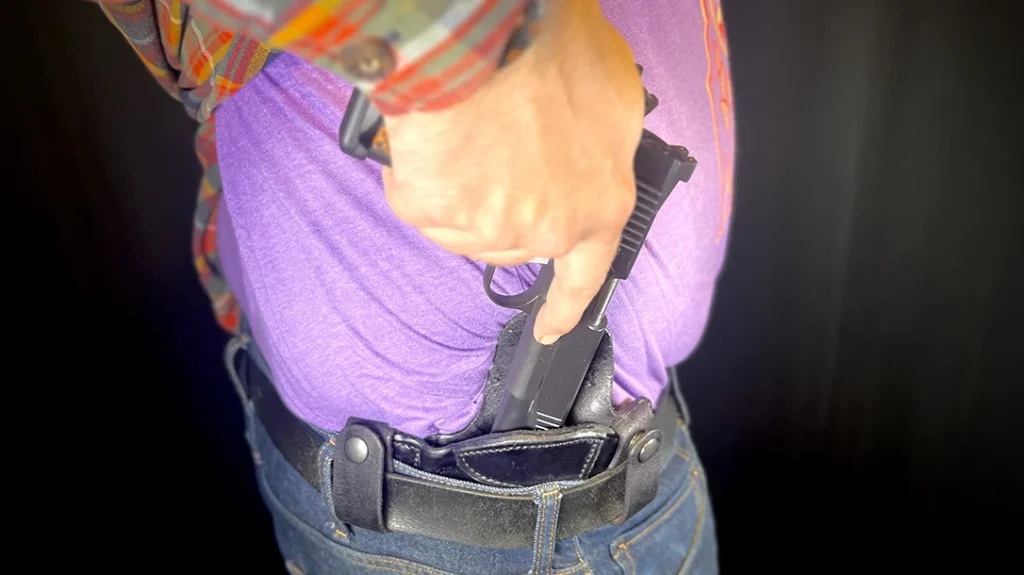
On the Range
Training with a holster means you are accepting a higher level of responsibility. Every movement—every draw, every reholster—must be done with intention and control.
Advertisement — Continue Reading Below
When you finish a string of fire and it’s time to put the gun away, don’t rush it. Use your support hand to move your garment. Visually confirm that the holster mouth is clear. Don’t stuff your gun in blindly. Clothing can easily bunch up behind the trigger guard and cause a discharge.
Appendix carry (AIWB) is increasingly popular, and I’m not here to tell you it’s wrong. But understand this: every major artery in your body flows through your pelvis. A mishandled reholster in that position could send a slug through your femoral artery.
The average time to lose consciousness from an injury like that is under 15 seconds. The solution? Don’t be in a hurry. You cannot reholster slowly enough.
Advertisement — Continue Reading Below
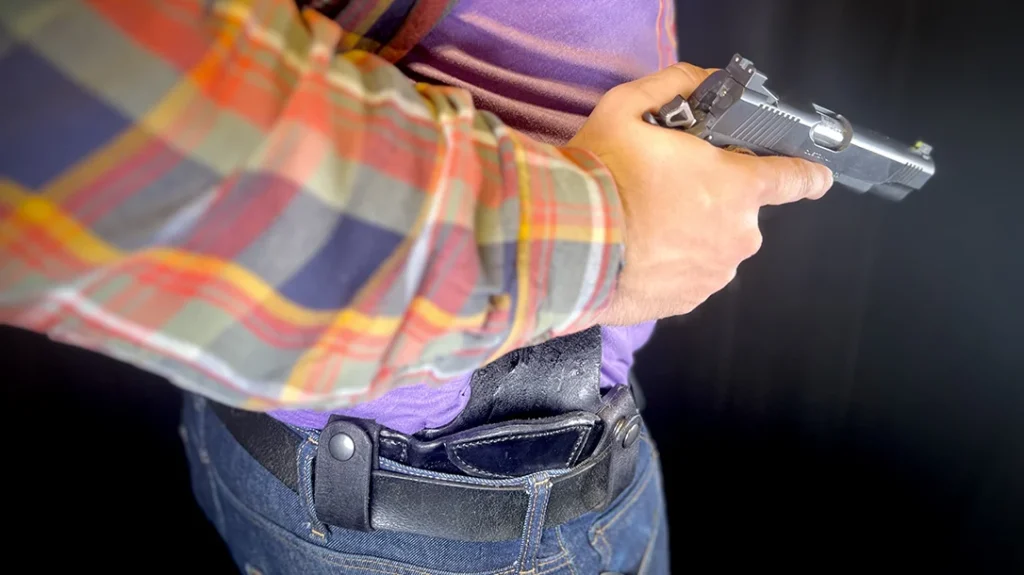
Your Trigger Finger and ON/ON, OFF/OFF
Holster work demands a deeper level of trigger discipline. Here’s the rule I teach every student: On, on. Off, off.
If your sights are on the target, your finger is on the trigger. If your sights are off the target, your finger is off the trigger. Period. That includes the draw and the reholster. Your trigger finger should not enter the trigger guard until the barrel is level with the ground and the sights are close to alignment. That’s how we avoid premature discharges and keep our training safe.
Advertisement — Continue Reading Below
If your gun has a mechanical safety—use it. Safety ON going into the holster. Safety OFF as you’re drawing and committing to your presentation. It’s an added layer of security and should be part of your muscle memory.
Cant and Ride Height
The way your holster sits on your body matters just as much as the holster itself. Two critical factors—cant angle and ride height—affect not just concealment, but draw efficiency. A slight forward cant (usually 10–15 degrees) can dramatically reduce printing, especially for IWB carry, by tucking the grip into your body’s natural lines.
Ride height determines how deeply the holster sits in the waistband. Too high, and the gun may tip or shift during movement. Too low, and your grip suffers during the draw. A properly adjusted holster should let you establish a full firing grip while keeping the gun comfortably tucked away when not in use.
Belt Selection
Even the best holster becomes unreliable without a solid, purpose-built belt. A proper gun belt is stiffer than a standard leather or fashion belt and is designed to support the weight of your firearm without sagging, shifting, or rolling under pressure. That stability keeps your holster in place, maintains your draw angle, and improves overall comfort.
If your holster feels like it’s “always moving” or you’re constantly adjusting it, odds are the belt is the real issue. Invest in a quality carry belt—it’s one of the most overlooked upgrades a concealed carrier can make.
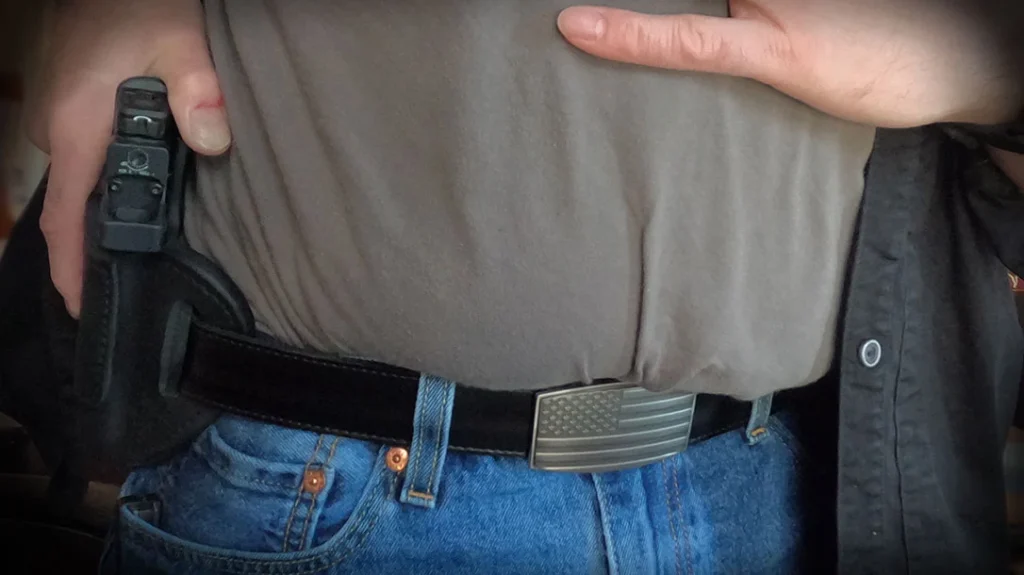
Speed, Accuracy, and the Real World
As concealed carriers, our job is to produce a firearm and place accurate rounds on target as quickly as possible. That’s the skill that can save your life. But speed means nothing without control.
Jeff Cooper and Jeff Tueller gave us the 21-foot rule for a reason. You may have less than two seconds before a threat closes that gap. The draw has to be natural. The presentation has to be consistent. And the shot has to be confident.
That only happens through repetition.
Train your draw. Train your garment clearance. Train your reholster. And train with the gear you carry, not just the stuff you shoot on Saturday with your friends.
A Holster Maker I Trust
If you’re looking for a custom holster that’s been shaped by someone who understands what real carry looks like, reach out to Erik at Side Guard Holsters. He’s been in the game for a long time, and his designs disappear on the beltline without sacrificing draw speed or retention.
Visit Side Guard Holsters and tell him Mitch sent you.
Training with a holster is a skill set. It’s not optional for concealed carriers. It’s not decorative. It’s life-saving.
The draw is the bridge between your awareness and your action. And the holster is the gate. Make sure you know how to use it. Train well. Train smart. And shoot safe.
